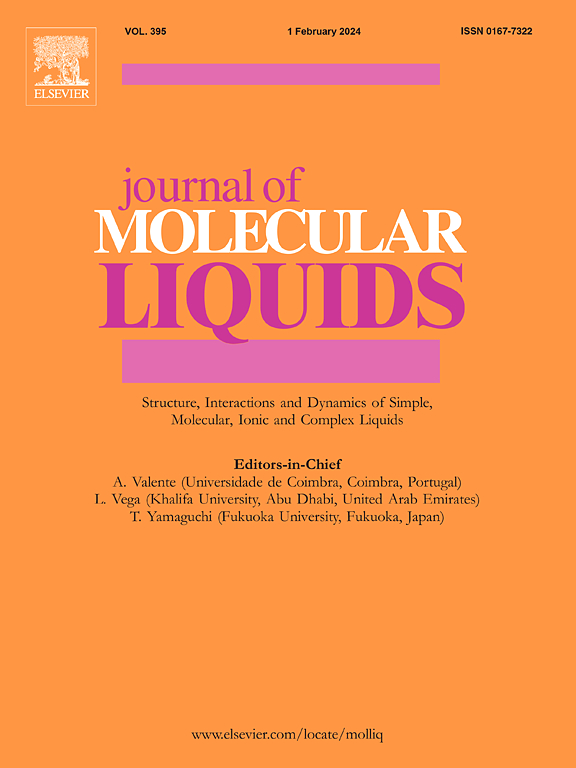Synthesis of sulfomethylated depolymerized alkali lignin and its application in scheelite flotation
IF 5.3
2区 化学
Q2 CHEMISTRY, PHYSICAL
引用次数: 0
Abstract
Scheelite serves as the main resource of tungsten. However, the recovery rate and efficiency of tungsten from scheelite ore is low due to the similar floatability of scheelite and calcium gangue. To improve the separation efficiency of scheelite from gangue, an bio-based and eco-friendly depressant, sulfomethylated depolymerized alkali lignin (SMDL), was designed in this work. It is synthesized by the oxidation, hydrolysis, electrocatalytic depolymerization, and sulfomethylation modification of alkali lignin (AL). FTIR, GPC, and NMR measurements was used to confirm the sulfonation degree and molecular weight in different depolymerization strategies. SMDL-2, which had the lowest molecular weight and the highest degree of sulfonation (2.2 mmol/g), presents stronger depressing effects on fluorite and calcite. The flotation recoveries of scheelite, calcite, and fluorite with SMDL-2 were 85.27 %, 13.34 %, and 12.76 %, respectively. The charge and electrostatic potential distribution results reveal that SMDL has abundant calcium-binding interaction sites, and these sites are positively correlated with the degree of sulfonation. Mechanistic analysis indicated that SMDL interact with the calcium sites of fluorite and calcite through hydrophilic –SO3, thus realizing the selective depression of fluorite and calcite. The utilization of SMDL can facilitate the flotation separation of high-grade scheelite and the high-value utilization of lignin waste resources.
求助全文
约1分钟内获得全文
求助全文
来源期刊

Journal of Molecular Liquids
化学-物理:原子、分子和化学物理
CiteScore
10.30
自引率
16.70%
发文量
2597
审稿时长
78 days
期刊介绍:
The journal includes papers in the following areas:
– Simple organic liquids and mixtures
– Ionic liquids
– Surfactant solutions (including micelles and vesicles) and liquid interfaces
– Colloidal solutions and nanoparticles
– Thermotropic and lyotropic liquid crystals
– Ferrofluids
– Water, aqueous solutions and other hydrogen-bonded liquids
– Lubricants, polymer solutions and melts
– Molten metals and salts
– Phase transitions and critical phenomena in liquids and confined fluids
– Self assembly in complex liquids.– Biomolecules in solution
The emphasis is on the molecular (or microscopic) understanding of particular liquids or liquid systems, especially concerning structure, dynamics and intermolecular forces. The experimental techniques used may include:
– Conventional spectroscopy (mid-IR and far-IR, Raman, NMR, etc.)
– Non-linear optics and time resolved spectroscopy (psec, fsec, asec, ISRS, etc.)
– Light scattering (Rayleigh, Brillouin, PCS, etc.)
– Dielectric relaxation
– X-ray and neutron scattering and diffraction.
Experimental studies, computer simulations (MD or MC) and analytical theory will be considered for publication; papers just reporting experimental results that do not contribute to the understanding of the fundamentals of molecular and ionic liquids will not be accepted. Only papers of a non-routine nature and advancing the field will be considered for publication.
 求助内容:
求助内容: 应助结果提醒方式:
应助结果提醒方式:


